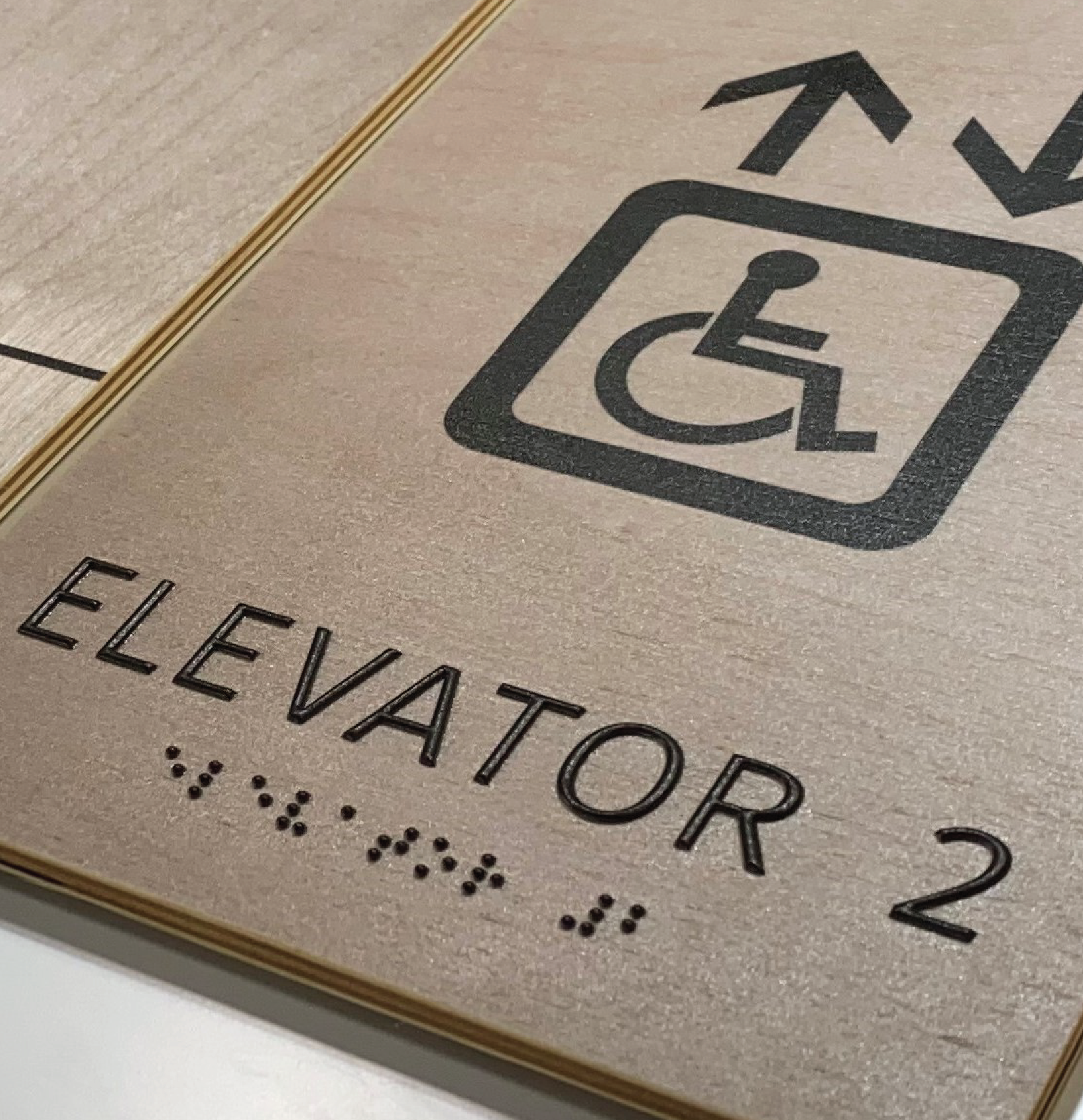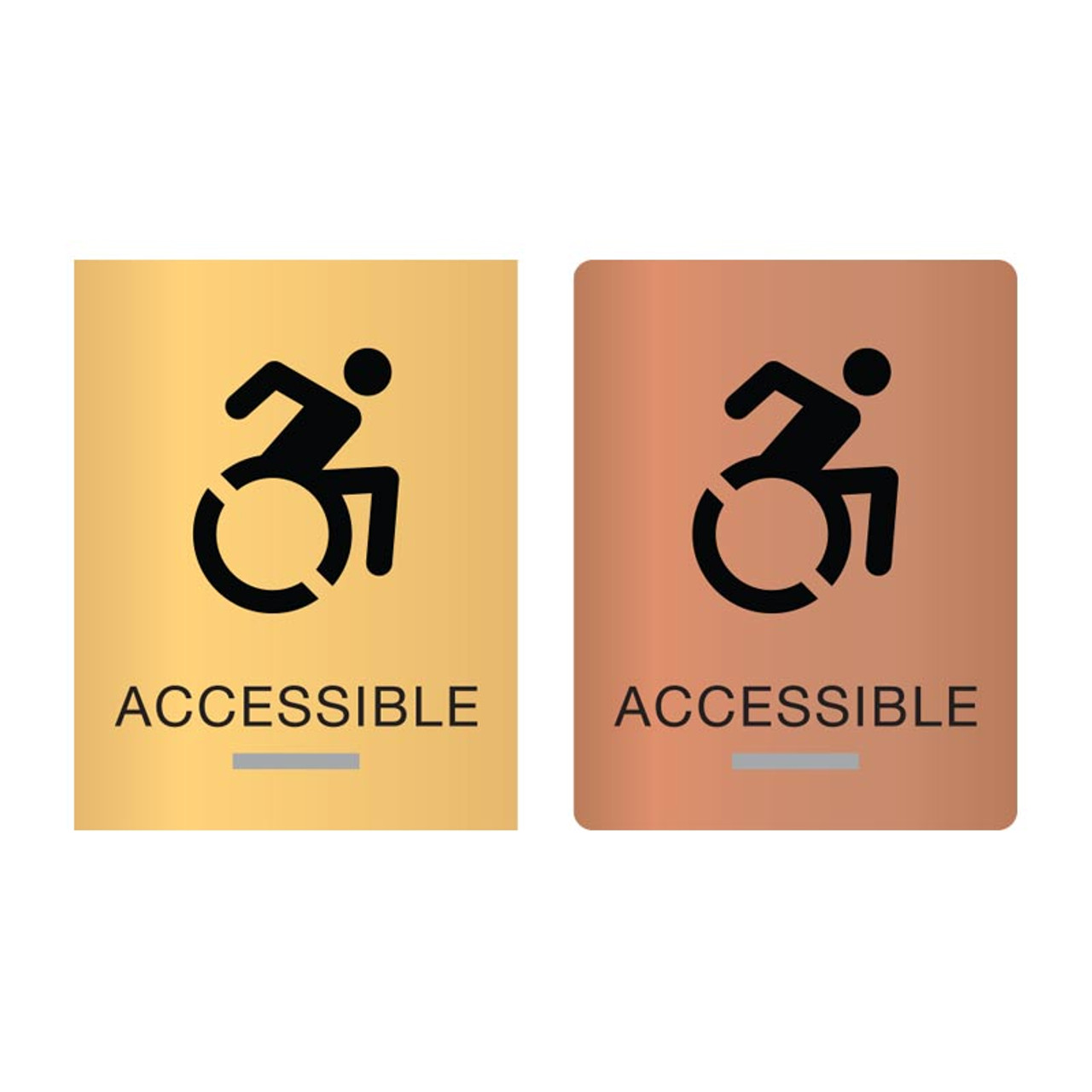The Advantages of Using Premium ADA Signs in Your Business
The Advantages of Using Premium ADA Signs in Your Business
Blog Article
Discovering the Key Features of ADA Indicators for Enhanced Availability
In the world of availability, ADA indicators act as quiet yet powerful allies, guaranteeing that areas are inclusive and accessible for people with disabilities. By integrating Braille and responsive components, these indicators damage obstacles for the visually damaged, while high-contrast color systems and clear typefaces provide to diverse visual needs. Their critical placement is not arbitrary however rather a computed initiative to assist in seamless navigating. Yet, beyond these functions lies a much deeper narrative about the evolution of inclusivity and the recurring commitment to developing equitable rooms. What much more could these signs signify in our pursuit of universal ease of access?
Significance of ADA Conformity
Making sure conformity with the Americans with Disabilities Act (ADA) is essential for promoting inclusivity and equal gain access to in public rooms and workplaces. The ADA, passed in 1990, mandates that all public centers, companies, and transport solutions accommodate individuals with disabilities, guaranteeing they delight in the same legal rights and opportunities as others. Conformity with ADA standards not just satisfies legal obligations yet additionally enhances an organization's reputation by demonstrating its commitment to diversity and inclusivity.
One of the crucial aspects of ADA compliance is the implementation of accessible signs. ADA signs are made to make sure that people with impairments can conveniently navigate via areas and buildings.
In addition, sticking to ADA policies can alleviate the threat of potential penalties and lawful effects. Organizations that fail to follow ADA standards might encounter penalties or legal actions, which can be both financially difficult and harmful to their public photo. Hence, ADA conformity is indispensable to promoting a fair setting for every person.
Braille and Tactile Components
The incorporation of Braille and tactile components into ADA signage symbolizes the principles of ease of access and inclusivity. These functions are essential for individuals that are visually damaged or blind, enabling them to browse public rooms with greater freedom and self-confidence. Braille, a responsive writing system, is important in offering written details in a layout that can be quickly regarded through touch. It is commonly placed below the equivalent message on signage to ensure that individuals can access the details without visual assistance.
Tactile components prolong past Braille and consist of increased signs and characters. These elements are developed to be noticeable by touch, permitting individuals to identify space numbers, toilets, exits, and various other critical areas. The ADA establishes specific standards pertaining to the size, spacing, and placement of these responsive aspects to optimize readability and guarantee consistency throughout various environments.

High-Contrast Color Design
High-contrast color systems play an essential duty in boosting the presence and readability of ADA signs for people with visual disabilities. These schemes are crucial as they make the most of the difference in light reflectance in between text and history, making certain that signs are conveniently discernible, here also from a range. The Americans with Disabilities Act (ADA) mandates using certain color contrasts to accommodate those with restricted vision, making it a crucial facet of conformity.
The efficacy of high-contrast colors lies in their capacity to stand apart in numerous lights conditions, consisting of poorly lit atmospheres and locations with glare. Typically, dark text on a light background or light message on a dark history is used to achieve optimum comparison. For example, black text on a yellow or white background provides a plain visual distinction that aids in quick recognition and understanding.

Legible Fonts and Text Dimension
When taking into consideration the design of ADA signage, the option of legible typefaces and suitable text size can not be overstated. These aspects are important for making certain that indications come to people with visual disabilities. The Americans with Disabilities Act (ADA) mandates that typefaces need to be not italic and sans-serif, oblique, script, highly decorative, or of uncommon form. These needs assist make certain that the message is quickly legible from a range which the personalities are distinct to varied audiences.
According to ADA guidelines, the minimum text elevation must be 5/8 inch, and it should boost proportionally with seeing range. Consistency in text dimension adds to a cohesive aesthetic experience, aiding people in navigating environments effectively.
Additionally, spacing between lines and letters is integral to clarity. Sufficient spacing stops characters from appearing crowded, boosting readability. By sticking to these requirements, designers can significantly enhance accessibility, ensuring that signs serves its designated objective for all individuals, no matter their visual abilities.
Efficient Placement Techniques
Strategic placement of ADA signage is vital for optimizing availability and ensuring compliance with legal requirements. ADA standards state that signs ought to be mounted at an elevation in between 48 to 60 inches from the ground to ensure they are within the line of sight for both standing and seated individuals.
In addition, indicators should be positioned nearby to the lock side of doors to enable very easy identification prior to entrance. This positioning assists individuals situate spaces and spaces without blockage. In cases where there is no door, indicators need to be located on the nearby nearby wall. Uniformity in indicator placement throughout a facility enhances predictability, reducing complication and enhancing general individual click over here now experience.

Final Thought
ADA indications play an essential duty in advertising accessibility by integrating functions that attend to the requirements of individuals with impairments. Integrating Braille and responsive aspects guarantees essential details is available to the aesthetically impaired, while high-contrast shade plans and understandable sans-serif fonts enhance visibility across various lights problems. Efficient positioning strategies, such as suitable mounting elevations and tactical areas, further facilitate navigation. These components collectively foster a comprehensive atmosphere, highlighting the relevance of ADA compliance in ensuring equivalent gain access to for all.
In the realm of accessibility, ADA indications serve as quiet yet powerful allies, making sure that spaces are accessible and inclusive for individuals with disabilities. The ADA, passed in 1990, mandates that all public facilities, employers, and transport services accommodate individuals with impairments, guaranteeing they enjoy the same civil liberties and chances as others. ADA Signs. ADA indications are created to make sure that individuals with disabilities can easily navigate with buildings and spaces. ADA standards stipulate that indications ought to be installed at an elevation in between 48 to 60 inches from the ground to ensure they are within the line of view for both standing and seated individuals.ADA indications play an essential role in advertising access by incorporating features wikipedia reference that attend to the requirements of people with handicaps
Report this page